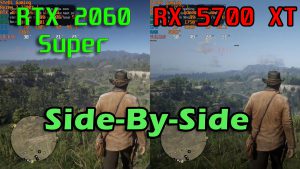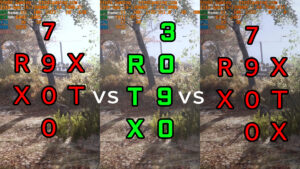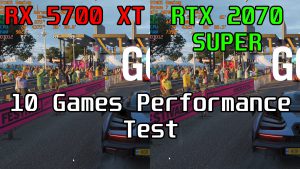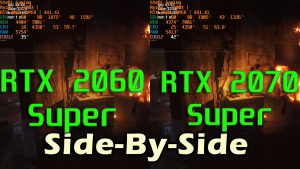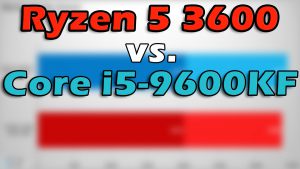
Performance, cont.
And back to the individual graphics cards comparisons – the GeForce RTX 2060 Super gives a decent increase of about 13% over the 2060, in addition to the larger memory capacity. At the same time, the cheaper Radeon RX 5700 shows an average 2% better result, so basically the two cards can be considered equal. However, it should be noted that the RTX 2060 Super only offers better performance in The Division 2, while the RX 5700 is about 10% faster in RDR2, Battlefield V and Metro: Exodus. Comparing GeForce RTX 2060 Super with the similarly priced Radeon RX 5700 XT in both of it tested versions, shows a clear advantage with an average result of a bit over 10%. Moreover, with the exception of The Division and Assassins Creed: Odyssey, the difference in all games is more than 10%, with RDR2, Battlefield V, Metro: Exodus and Forza Horizon 4 reaching and even exceeding 20%, meaning we are talking about a different tier of performance. And that is with the prices of AMD models even lower than the tested GeForce RTX 2060 Super from Palit, making it extremely difficult to recommend the later.
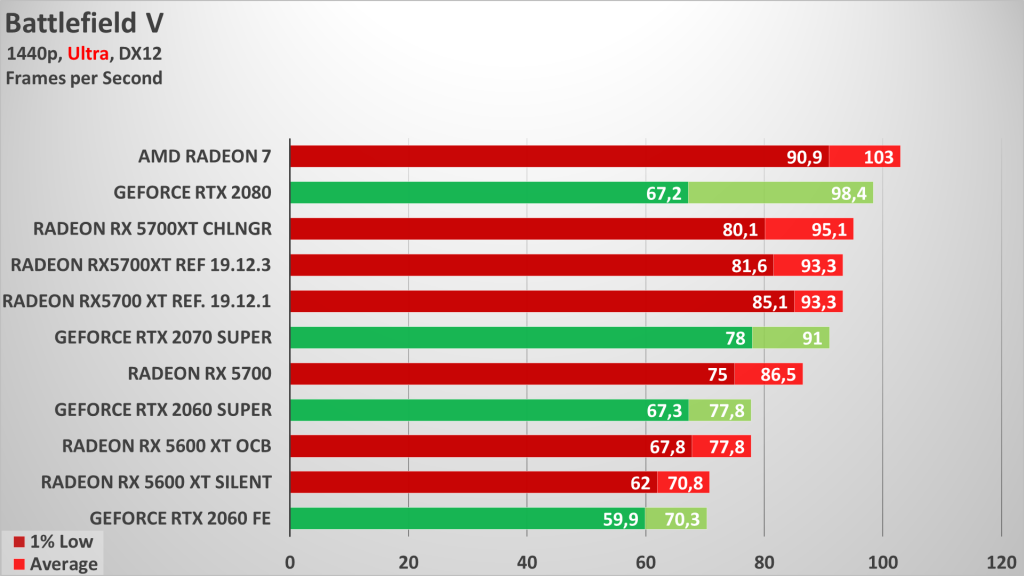
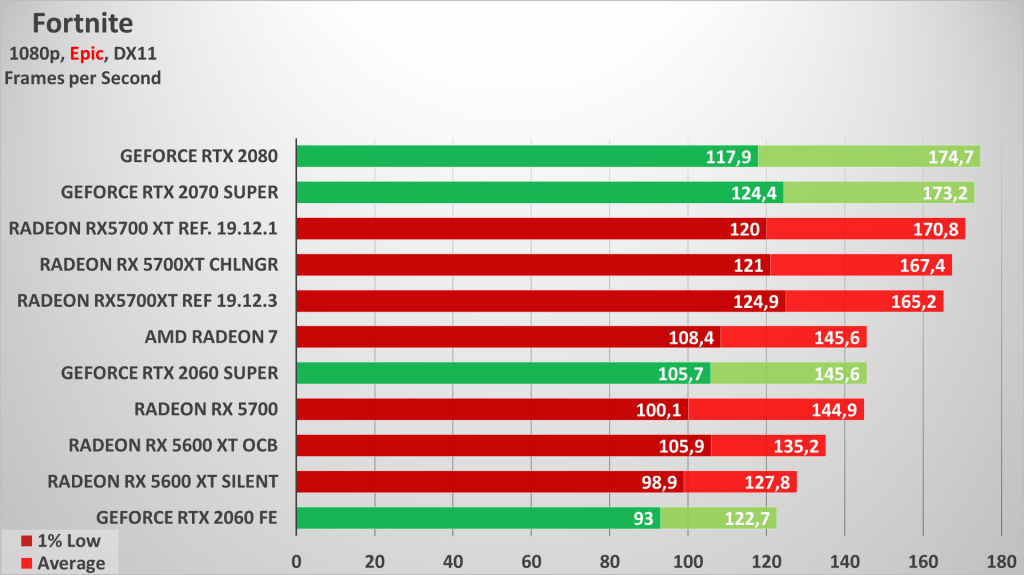
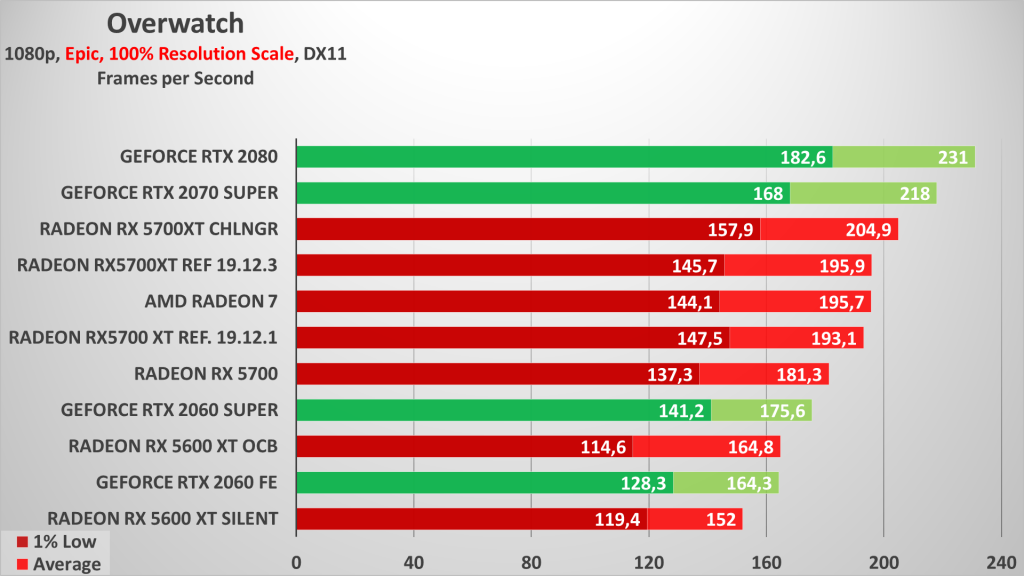
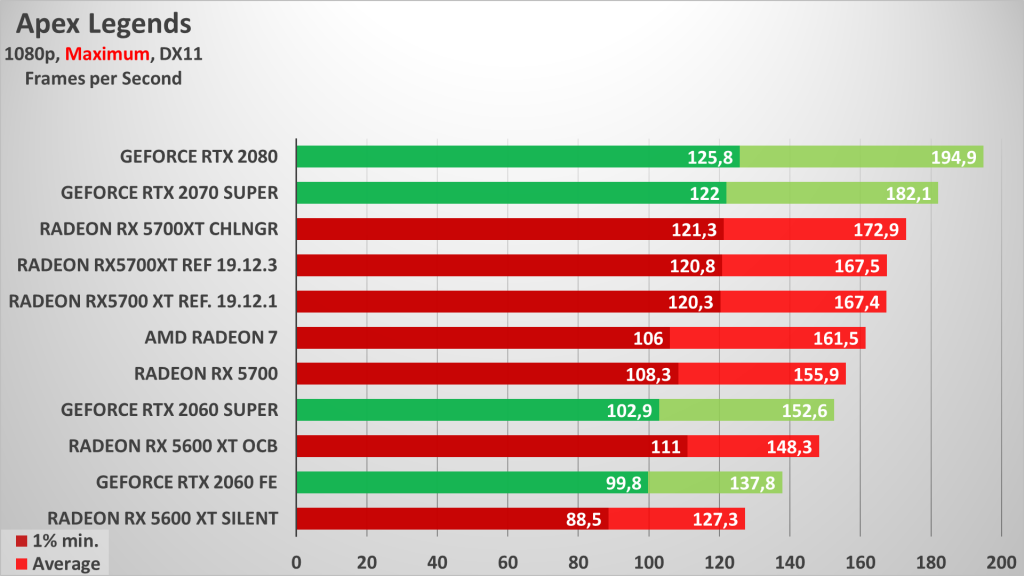
For its part, the GeForce RT 2070 Super manages to beat the Radeon RX 5700 XT in both versions, but on average the difference is below 10%, with only 2 games having more than that advantage over Nvidia – the troubled The Division 2 and Gears 5. Even with the older 19.12.1 driver, which lacks the problem of low frames, The Division 2 remains over 10% in favor of the 2070 Super. In other games the difference is within +/- 5-6%. So in real world gaming you won’t get noticeably better performance with the Nvidia model, and the price difference is significant.
Another interesting thing to note is that Radeon RX 5700 XT and GeForce RTX 2070 Super have identical configuration in terms of compute resources – that is 2560 CUDA or shader ALU’s in the respective nomenclature, 160 texturing modules, 64 ROPs and 256-bit bus to 14 Gbps GDDR6 memory. In purely numerical terms the only difference is that the Nvidia model typically hovers at 1920-1935 MHz, while the AMD model(s) are at about 1810-1820 MHz. Which is around 6% difference in clock speed … almost perfectly in line with the difference we got on average during testing. This clearly shows that the RDNA in Navi 10 has approximately the same IPC as Turing in TU106 with the same configuration of computing modules and similar frequencies. That is to say AMD is now at least catching up with Nvidia in terms of architecture performance and only needs a bit of catch up on power consumption. So it is likely that the power balance later in the year will depend on who has advanced more in architecture and how large a chip has decided to position in the different performance tiers.
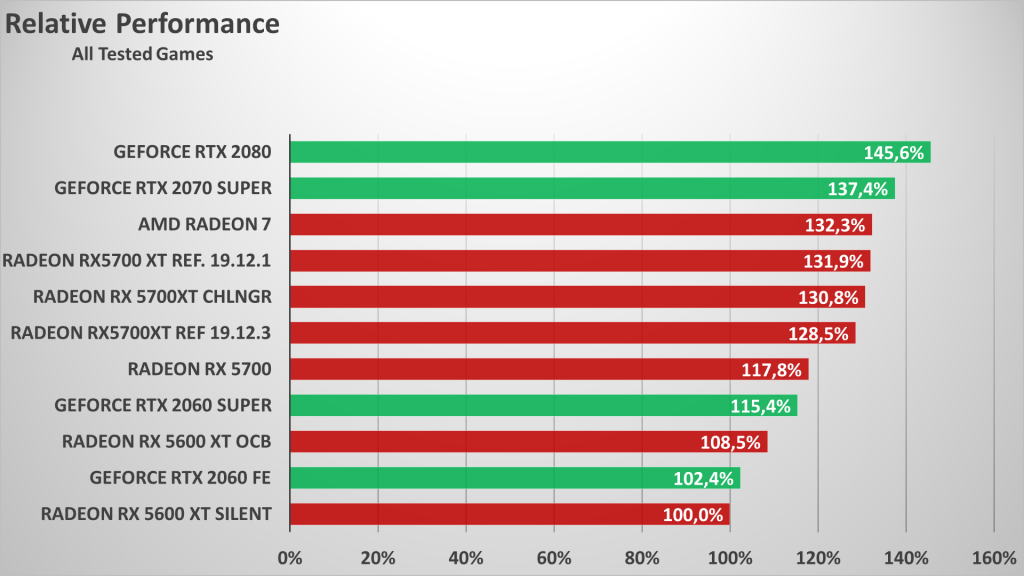
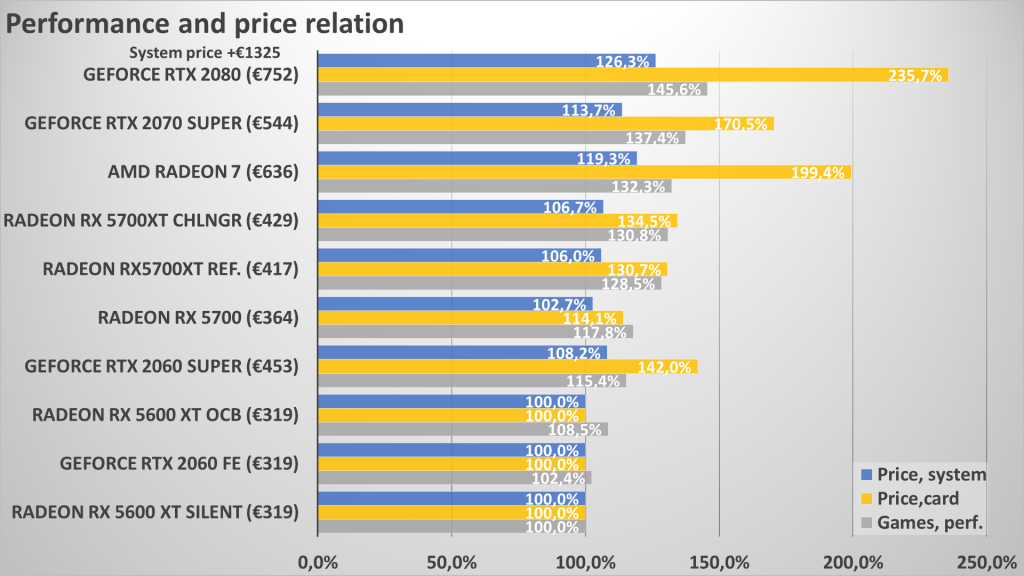
If we compare the RTX 2070 Super with its predecessor RTX 2080, the difference is really minimal, within 6%. There are a few games where we touch 10-11%, but overall it doesn’t make much sense to keep pushing for 2080. Even a 2080 Super should increase the difference to 10-12% maximum, but the price difference is over 30%, so that honestly it is very difficult to recommend the larger TU104 models.
Finally, a few words post mortem about Radeon VII. Given the results, I think it is more than clear why this model has already disappeared from the market. Even considering the problem in The Division 2, the Radeon RX 5700 XT delivers virtually the same gaming performance as the Radeon VII, which originally was priced nearly double. The only two places where you can see a more significant difference, i.e. over 10% one way or the other, are Battlefield V in favour of Radeon VII and Fortnite in favour of Radeon RX 5700 XT. Moreover, with the advent of the Radeon VII, it was claimed to compete with the GeForce RTX 2080, but at the moment the card is considerable distance behind the Nvidia’s supposed competitor, with an average difference of about 10%, even remaining behind the GeForce RTX 2070 Super. So, at least for gaming, the time of the big chips with Vega architecture is over.
